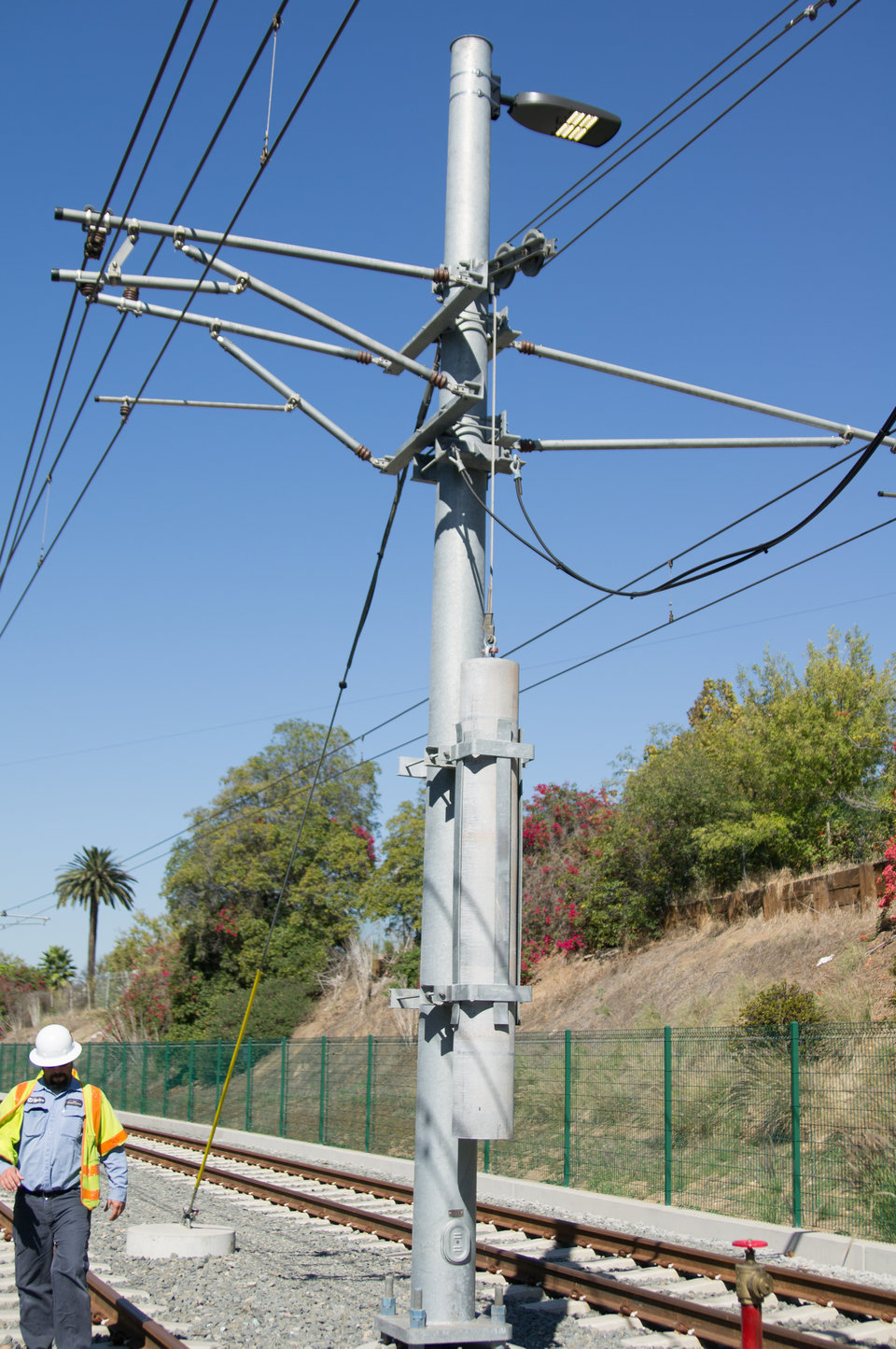Help me out here transit gurus. Springfield's about 100 miles away from Boston. From reading one of the articles the trains can top out between 60-75 mph along the route. That means at worse the train should get to SPG in an hour and a half. What's up with the extra 45-60 minutes? Is it making stops along the way (which I'm not sure I understand why - is there really demand for SPG to WOR)? Also, what's up with the 2 billion bucks? Isn't Amtrak already making the same trip along the same line, so aside from the cost of operating the trains due to the new service what else is included in there?
We don't have the published study yet to make any sense of what metrics they did use, so how they arrived at these big fat conclusions of way-low ridership + longer travel times + $800M cost inflation over the equivalent NNEIRI-studied alt. is a giant mystery. One that is stirring up all the right suspicions of fingers being pressed firmly on the scale to affect a desired outcome.
Right now all we have is the NNEIRI publications to go by. The important differences with that study is that it was based around ConnDOT's and VTrans' involvement with the 8 daily Inland Route BOS-SPG-NHV/etc. round-trips, the existing once daily Vermonter/Montrealer round-trip coordinated with Inland Route slots to provide Worcester/Boston patrons with a timed cross-ticketed transfer for Montreal, and the additional new once daily Boston-Montreal round-trip reciprocally coordinated with an Inland cross-tix transfer for New York/Connecticut patrons. East-West made
no assumptions of any involvement from other states, including the 8-per-day Inlands with all their load-bearing Connecticut ridership. That right there is a jarring change affecting the whole game for top-level ridership. No Inland Route schedule coordination means all Connecticut-originating transfer traffic for the
Lake Shore Ltd. or Pittsfield traffic is immediately off the table, as well as all ridership between Worcester/Boston and CT city pairs. While we must wait for the published study to get any rationale for that decision, it is baffling on its face to make that exclusion when CT is the
most enthusiastic backer of the Inland Route with the
most top-line ridership to contribute of any interested partner (and paid for a metric shitload of Springfield Line upgrades in large part because it wants those 8 Inlands slots so bad). Springfield Hub doesn't work on its face without quantifying demand from the south, and the value proposition for linear cross-state service is severely weakened if the Springfield Hub linchpin is severely discounted by the base study metrics. Right there you've got a giant methodology flaw vs. the study that preceded it by barely 4 years, and questions about whether it was an intentional move to tie one hand behind East-West's back by pretending Connecticut isn't a really fucking big driver.
These strange methodology assumptions also have serious impact on bottom-line operating costs, as all NNEIRI services involving CT as a prerequisite would've used Amtrak-New Haven yard + shops as their equipment home base since that is where the
Springfield Shuttles are serviced and where the longstanding electric-diesel loco swap lives. Massachusetts has no native AMTK equipment base, as Southampton Yard in Boston is only large enough to be tasked with strict turnaround duties on
NE Regional and
Acela trains + a crowded overnight shift of storage and next-service-day shop work. For example,
Downeaster equipment is all triaged out of Albany Shops and shuffled in/out of New England on the back of the
Lake Shore Ltd. because Southampton doesn't have the shop bandwidth for that. Excluding Connecticut means an artificial assumption must be made of completely new homegrown equipment base capacity being built into the capital and operating costs. Which makes no sense on its face when following real-world demand for Springfield Hub bullseyes Connecticut as such a strong gravity well, where New Haven Shops are conveniently already there (with
slack capacity to offer because starting 20 years ago engine swaps and NHV-terminating runs were pared enormously back to just the
Shuttles,
Vermonter, and
Springfield Regionals with completion of the Boston electrification and the axe falling on the original Inland schedules).
How they managed to take the same B&A ROW topography and come up with slower travel times than NNEIRI at twice the cost in track work is equally a mystery, as NNEIRI performed an entire Tier 1 EIS for on-the-ground touches like curve-easings and whatnot for its Preferred Alt. Keep in mind that NNEIRI's $1.2B
top price tag for its Preferred Alt. also included
ALL track upgrades on the Conn River Line and Central Vermont Mainline for the Montreal legs of Springfield Hub as part of its total package. B&A-solo upgrades for just the Inland Route were only 60% of that total, and fully factored as a scaled-back Alternative that omitted Springfield-Greenfield + Vermont for now. And despite that cheaper option being fully factored, it did
not get endorsed because the full Preferred Alt. that treated the north leg of SPG Hub was deemed high-enough upside to go for. East-West somehow arrived at an $800M higher price tag with
absolute zero consideration for the 245 track miles between Springfield and St. Albans, VT...but still managed to find nearly $1-1/2 billion in cost increases on the B&A alone. On a
slower BOS-SPG trip.
To say that makes no sense would be the understatement of the year. Either they uncovered some absolutely collossal fuck-up in the NNEIRI Tier 1 EIS's methodology on track speeds through the Worcester Hills, or East-West's methodology is total junk and packed with overspend constituencies that don't jibe with actual recent spent similar projects like AMTK/ConnDOT's Springfield Line upgrades. Whopper doesn't begin to describe the discrepancy they need to explain away in the final E-W publication.
Furthermore, the NNEIRI Preferred Alt. was also served up in terms of some track upgrades that did
not make the cut for service starts--like Class 5/90 MPH track between Palmer and Springfield (seen as surplus-to-requirement for getting the thing initially seeded)--being able to be accommodated as future on-the-fly adds once service was established and actual demand was on more solid ground for weighing above-and-beyond investments. East-West, by necessity of having to reach way back to revisit long-rejected and impractical reaches like the full-on $25B Pittsfield HSR nonstarter, chunked out its Alts. more monolithically by nature. While we need to see the full text of it to be sure, it does not appear from the PowerPoints that it's served up with the kind of flexibility to factor costs of going back in Year 8-12 of exploding Inland ridership growth and doing the additional 90 MPH upgrade layer. Value proposition gets negatively impacted by a presentation of less flexibility to pay-as-you-go or crank up the scale as future demand warrants. Now keep in mind NNEIRI still projects faster than East-West
despite intentionally leaving some slack on the table like that 90 MPH trans-Wilbraham stretch to backfill later...and E-W is not saying much of anything about what is possible to chunk out on the installment plan if this strangely inflated $2B baseline is too big an initial swallow. Take all that with the omission of Connecticut demand, cost-reducing partnerships with the two neighboring states off SPG Hub, and so on. Inflexibility seems to be an end to itself.
Again...we have to allow some wiggle room for the full published study to explain itself before totally rejecting it as an intentionally crippled waste of taxpayer money seemingly designed to do nothing except troll the very comprehensive and even-handed study that preceded it (which SHOULD, if our Legislative leadership gave a flying fuck, be more than enough to get Pollack hauled in to be grilled in hearings for wasting MassDOT money on score-settling). But it'll have to be one hell of a good and comprehensive explanation to cover what gigantic whoppers scream out here in the initial conclusions. Odds are overwhelming that the study premise is not going to wash with any plausible honesty.



/arc-anglerfish-arc2-prod-advancelocal.s3.amazonaws.com/public/IQUAGQQ7GVEKVNZKQUCCZ7SA34.jpg)

